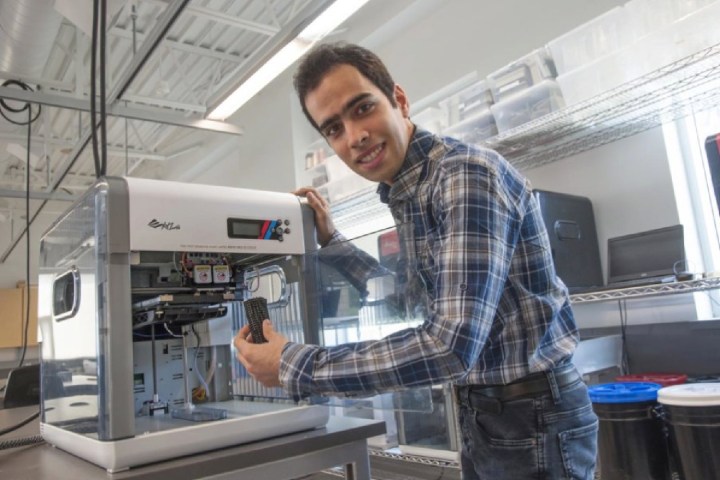
A new research project carried out at the University of British Columbia’s Okanagan School of Engineering has another solution to the problem. What researcher Hossein Montazerian and colleagues have developed is a new artificial bone design which can be custom-printed using a 3D printer to result in stronger, safer and more effective bone replacements.
“When a bone loss occurs due to fracture, tumor, or otherwise, the doctor may decide to replace or fill the damaged area with a biologically compatible material,” Montazerian told Digital Trends. “These porous bone replacements — which mimic the porous structure of human bone — can be specifically designed based on the patient’s bone shape and fit with the damaged bone.”
Montazerian’s design for the material takes inspiration from patterns that exist in nature to architect a porous structure similar to real bones. “From those patterns, we identified the most suitable ones in terms of the design criteria for bone replacements — strength, stiffness, and porosity — through massive computer simulations for a big library of pore architectures,” he said.
The best designs Montazerian discovered were up to 10 times stronger than the others and had properties very similar to natural bones — which he hopes means that they will be less likely to cause problems over time. The research is not finished yet and no final material has been produced, but the results are highly promising.
“In this research, we focused on the structures in which the geometric features were uniform all over the scaffold,” Montazerian said. “Later we hope to introduce the next generation of scaffolds in which the features of pore architecture, such as porosity or pore shape, smoothly changes to further make its mechanical and biological responses close to the natural bone.”
A paper describing the research was recently published in the journal Materials & Design.


